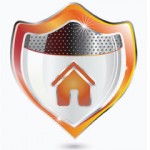Looking after your staff really does pay dividends. If you respect and support them through their working careers, they will stay longer, work harder and put much more effort into whatever they do. Happy staff are more productive and will offer you extra help when you really need it rather than a worker who feels unappreciated and gives work not even a second thought after clocking off time. They will more than likely also be unprepared to work extra hours or shifts when asked. If you treat them as just mere workers and never give them the time of day, that is exactly how they will treat you and your company in return.
Hiring the right kind of staff for the job is of course crucial in the first instance, but looking after them after they have started employment with your firm is probably one of the most important things you can do. The ways to do this are simple.
Make them feel a part of the team. Welcome them into your company and make them aware that your door is always open if they need help. Greet them on a daily basis and thank them at every opportunity. Make it company practice that their direct managers do this too, as it makes the staff feel valued and not just a number.
If you set targets, give them an incentive like a prize for reaching set targets or just for doing well. Reward hard work with pay raises or a perk, such as a company car or gym membership. They are sometimes more valuable than extra cash in their paycheck.
You may also want to think about providing childcare vouchers for working parents or medical and dental plans for all staff, if your company can afford it. This way you may attract better workers for less direct outlay.
Not only looking after your employees financial and physical expectations is needed but also their emotional and mental needs should be addressed. Freedom from bullying and harassment are just two situations that need to be looked at and dealt with quickly and harshly, so they are not repeated time and time again.
Training is also key and employees should be given every opportunity to learn and grow within your business, a chance to advance their career and climb the company ladder. Give them every chance to prove to you and themselves that they can achieve great things. Let them make mistakes and learn from them, but also be there if they need help and support. If their job includes safety hazards, be sure they know how to use their industrial safety supplies, (i.e., gloves, safety glasses, etc.) and take care of it.
Integrate them into company projects, this makes them feel important and gives them the push to succeed. Invite them to help make decisions, get them to vote on new company policies or set new rules. They are your staff and should also have a say in what happens within the company.
Offer to give your staff time off when they really need it, for example when a family member is sick and they need to look after them or let them go early as a reward for working hard. All these generosities will be viewed kindly and will help you retain loyal, hard working employees who appreciate your efforts to make their working careers less stressful and more enjoyable. People who enjoy their job tend to stay on, even if they are offered a higher salary elsewhere.
So if you treat your staff as you would like to be treated, you will earn their respect and gain their trust. Work in partnership with them, instead of dominating them at every turn. Work to their strengths and abilities and you won’t go far wrong!
“Good words of advice from Conner Short from The Van Warehouse“.
